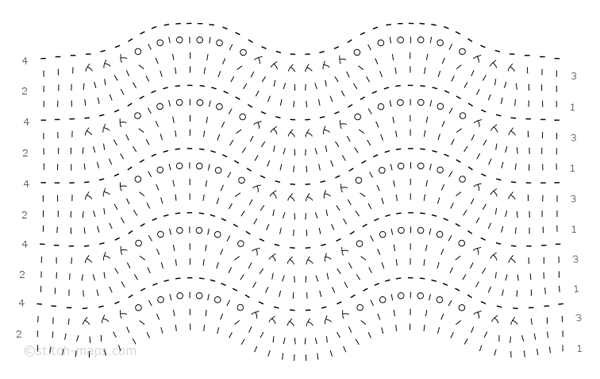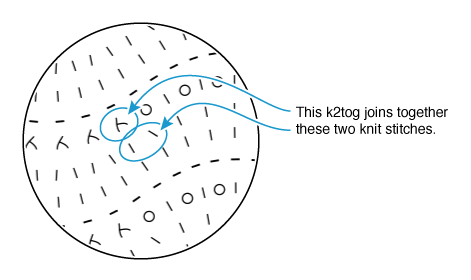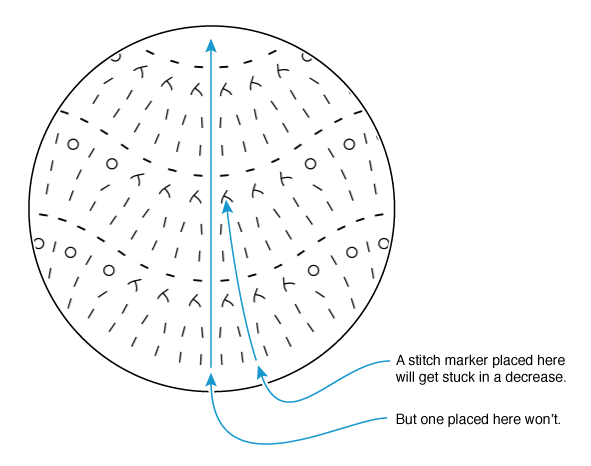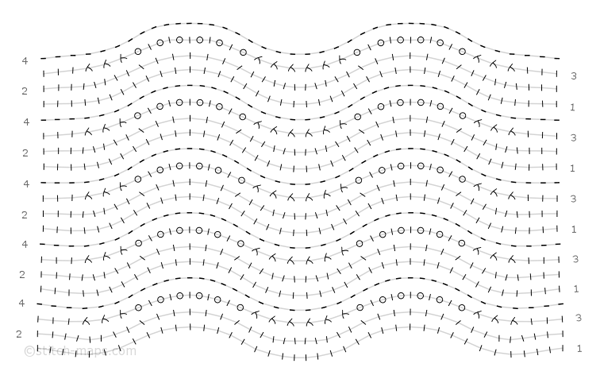
For crocheters, the idea of visually representative stitch charts is no big deal, but, for knitters, this week’s unveiling of Stitch Maps from knitting teacher and author JC Briar is kind of a game changer.
As anyone who’s ever knitted an unfamiliar pattern can attest, being able to picture lines of written instructions or gridded stitch charts as a physical knitted shape is extremely helpful, but that written-to-visual leap doesn’t always come easily. The fact that Stitch Maps show both the individual stitches and the overall shape of the design makes them a really intriguing option—especially for those who learn best visually.

Here’s a closer look at how the stitches interact with each other in a stitch map. (All of the example images shown in this post are from a feather and fan pattern.)
Stitch maps are a new form of knitting chart that use traditional symbols in a novel way: without a grid.
The symbols within a stitch map clearly show what stitches to work. And – not being confined within grid squares – they also show which stitches of the previous row should be worked.
The end result? Charts with unparalleled fluidity, authenticity, and beauty.
Pretty neat, right?


As you can see, stitch maps create a visually lovely and incredibly detailed representation of the patterns, structures, and construction techniques that come together to create a finished knitted item. I love that you can see individual stitches toggling together (or yarn overs or different kinds of stitches) and how those changes affect the shape of the item that you’re making. Turning on the row guide option also makes the maps incredibly easy to follow, showing each step in the pattern repeat in a way that’s clear and easy to identify.
I’m pretty excited to see how Stitch Maps evolves as it grows, and I can definitely see this pattern display method catching on. (I can also see it turning into a great design tool—in theory, you could try out new stitch patterns without a ton of test knitting!) Ready to give it a try? As of now, there are just under 150 patterns available on the site, plus options to contribute to the project and subscription levels for customizing your experience.
Photo credit: All images in this post are care of Stitch Maps.

brilliant idea!